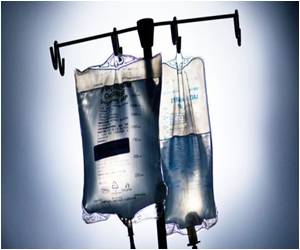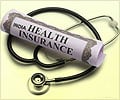Spending on health care a well-known fact and has consistently grown faster than the rest of the U.S. economy.

"Rising costs of treatment have had a much greater impact on driving up average spending than increased disease prevalence," Starr said. "To tackle the problem of health care spending from a policy perspective, solutions need to focus on slowing growth of spending on procedures, treatments, and drugs used to treat given diseases and conditions. Of course, slowing or reversing the rise of chronic conditions would be beneficial for the health and well-being of the U.S. population, but by itself it won't put much of a dent in health care spending growth."
The research findings appear in the May issue of Health Affairs. The researchers examined data from four nationally representative surveys from 1980 to 2006. They analyzed how shares of the U.S. population afflicted with different diseases and conditions and the costs and services used to treat them contributed to growth in average spending on health care, adjusting for inflation.
"In contrast to earlier studies on health care spending, we analyzed data that covered a longer time period and the full range of health care cases," Aizcorbe said.
Over the whole period, rising disease prevalence boosted spending by 0.5 percentage point per year compared to a contribution of 2.5 percentage points from rising cost per case, the researchers found. Costs of treatment have increased due to both rising prices of health care services and more intensive use of services to treat diseases. Robust growth in cost per case occurred for musculoskeletal conditions and circulatory and respiratory disorders. Particularly hefty growth was associated with rising average costs of routine care, which more than doubled over the period to $602 per person per year in 2006. Increased cases of chronic conditions such as diabetes, heart conditions, high cholesterol, and mental disorders boosted health care spending as well, but in a much more modest way.
When examining rising health care spending, economists look at population aging and shifts in insurance coverage. Starr and Aizcorbe found these played minor roles over the 26-year period. And even though rising disease prevalence from 1997 to 2006 stood out, it still accounted for only one-third of average spending growth. The researchers also noted that had there not been a steady shift away from the use of hospital services, the rate of spending growth would have been well above 3.5 percent per year.
Traditionally, health-care delivery systems have focused on treating the sick and injured, rather than keeping people well. Recent innovations in health-care delivery emphasize 'population health management' -- that is, trying to promote population health by making sure people get preventive care, increasing monitoring of patients with chronic conditions, and increasing follow-up with patients in poor health, among other methods.
Source-Eurekalert
 MEDINDIA
MEDINDIA




 Email
Email







